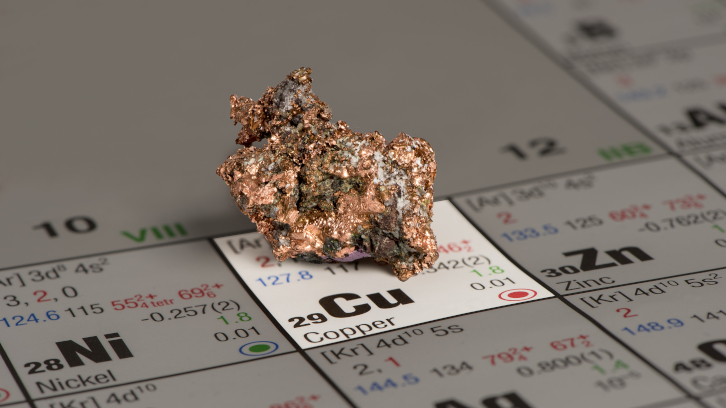Tailor-made synthesis of copper complexes with different crystalline structures

Coordination compounds are chemical complexes containing a central atom and other atoms or molecules that surround it. Josefina Pons' research team has synthesised and analysed the crystalline structure of complexes where the central atom is a copper (II) ion, and has managed to obtain two different arrangements separately, linear and zigzag, depending on small modifications in the synthesis conditions.
In the formation of coordination polymers is essential to study the structural arrangement and the factors that influence in this formation. Slight modifications of synthetic conditions can lead different arrangements, which affect the chemical and physical properties. Crystal engineering aimed to be a fruitful strategy to design new structures controlling the typology through the formation of coordination bonds.
The factors that affect the formation of one arrangement and not other are a) molar ratio b) structure of the ligand c) solvent d) coordination geometry of the metal atom e) presence of the anions can have a determinant effect and are important to control the formation of the desired products. Slight modifications of the conditions can promote the formation of cis or trans isomers. The isomers posses distinct chemical and physical properties.
Cu(II)-carboxylate complexes in presence of N-aromatic linkers present a wide range of Cu(II) interaction. The design of Cu(II) networks is appropriate for adsorption/ desorption of water. Unfortunately, these materials tend to rapidly decompose after few sorption/desorption cycles.
Our research group, has previously reported the synthesis and characterization of different Cu(II) complexes containing carboxylate and N-aromatic ligands. We have observed that the presence of H2O molecules influences in the formation of crystal packing.
We extended this study in the synthesis and characterization of Cu(II)-carboxylate and 4,4’-bipyridine obtaining two coordination polymers with 1D array. The coordination of the H2O molecule to the Cu(II) metal center supported the arrangement linear chains, while the absence of coordinated water it allows the formation of zigzag chains.
The two coordinated polymers were found simultaneously crystallized and their crystal structures elucidated. The modification of the synthetic conditions (molar ratio and rection solvent) allowed the isolation of both compounds. Despite being scarce, there are reported case studies in which two similar Cu(II) coordination polymers composed of 4,4’-bipyridine linker were separately synthesized. Likewise, there are limited examples where two geometrical isomers were found simultaneously crystallized. Remarkably, in these cases there was not a synthetic route to separately synthesize them.
References
Sánchez-Férez, Teresa Calvet, Mercè Font-Bardía, Josefina Pons, Cu(II) coordination polymers with 4,4’-bipyridine. Synthesis and crystal structures, Journal Molecular Structure, (2021) 1235, 130219


